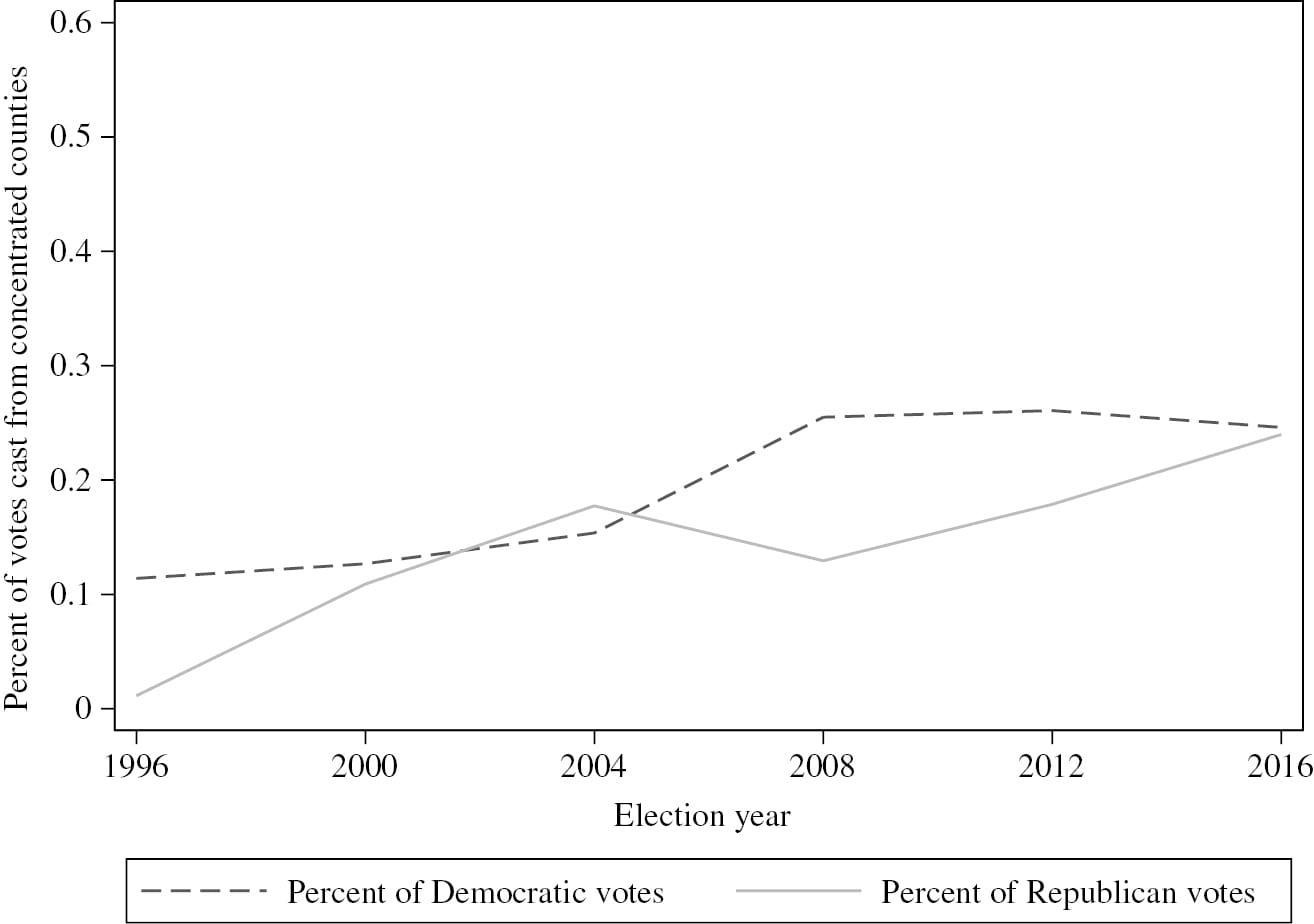Explore over 200 years of US Presidential Election data, from George Washington to the present day, with interactive maps and county-level results available through Dave Leip’s Atlas of U.S. Presidential Elections. This comprehensive resource also includes Senate and Governor races since 1990, providing a rich tapestry of American political history.
Unveiling the History and Power of Leip’s Atlas
Dave Leip’s Atlas isn’t just another dry data repository; it’s a dynamic, interactive tool that brings U.S. election history to life. Developed by David Leip, an electrical engineer with a passion for politics, the Atlas started as a personal project after the 1992 election. It has since become an indispensable resource, cited by leading political analysts like Nate Silver, and offering a treasure trove of information for anyone interested in American democracy.
The Genesis of a Political Data Powerhouse
Leip’s fascination with election data blossomed into a project that has transformed how we understand political history. What began as a post-election hobby in 1992 evolved into a meticulously researched and constantly updated database. This passion project, generously made available to the public, is now a cornerstone of political analysis, used by journalists, academics, and curious citizens alike. The Atlas demonstrates how a personal interest can flourish into a vital public resource.
Uncovering the Trove of Election Data
From George Washington’s first victory to the most recent election results, Leip’s Atlas provides a comprehensive overview of U.S. presidential elections. But it doesn’t stop there. The Atlas also encompasses Senate and Gubernatorial races dating back to 1990, offering a broader perspective on the American political landscape. Dive into national-level results, explore state-specific outcomes, and even zoom in on county-level data to uncover local voting patterns and trends. The depth of information available allows for detailed analysis of how elections have shaped the nation’s trajectory.
Beyond the Numbers: Interactive Exploration
Leip’s Atlas goes beyond static data, providing interactive maps and charts that bring election results to life. Imagine visualizing the shifting political landscape over centuries, zooming in on specific regions to understand local voting trends, and even exploring “what-if” scenarios with the Electoral College Calculator (covering 1840-2004). This interactive approach transforms raw data into a captivating narrative, allowing users to engage with history in a dynamic way.
Accessibility and Usage: Empowering Informed Exploration
The Dave Leip’s Atlas website is designed for user-friendliness, making it accessible to everyone regardless of their technical expertise. Whether you’re a seasoned researcher or a curious citizen, navigating the site is intuitive and straightforward. Explore data by year, candidate, or state with ease. Moreover, the Atlas offers downloadable datasets (check the website for availability), empowering researchers to conduct their own in-depth analyses.
Diving Deep into US Election History: Analysis & Insights
Understanding how America votes is key to understanding America itself. Dave Leip’s Atlas provides the tools and the data to unlock these insights. It’s not just about who won or lost; it’s about understanding the nuances of voter behavior, regional trends, and the factors that shape our political landscape.
Beyond the Presidency: Exploring a Wider Political Spectrum
While presidential races often dominate the headlines, Senate and gubernatorial elections play a crucial role in shaping the political direction of individual states and the nation as a whole. Leip’s Atlas recognizes this, offering data on these races to provide a more complete picture. This broader perspective allows for a deeper understanding of the interconnectedness between local and national politics, revealing how state-level trends can influence national outcomes.
Uncovering Hidden Patterns and Trends
Leip’s Atlas empowers users to become electoral detectives, uncovering hidden patterns and trends within the data. Identify bellwether counties whose voting patterns accurately predict national outcomes. Analyze how historical events and social movements have influenced voter behavior. Explore the impact of third parties on elections. The possibilities for discovery are vast.
Leip’s Atlas in Context: Comparing Resources
While sources like the Federal Election Commission (FEC) website offer raw data, Leip’s Atlas provides historical context, interactive features, and tools for deep analysis. It complements these resources, providing a unique lens through which to view American political history. It’s not just about finding the numbers; it’s about understanding the stories they tell. Some experts suggest this contextualized approach is crucial for nuanced understanding.
The Future of Leip’s Atlas: A Living Archive
Preserved at Cornell University Library, Leip’s Atlas is a living resource, constantly evolving to reflect the changing political landscape. This ensures its long-term accessibility for future generations of researchers and anyone interested in understanding the evolving story of American democracy. What new features might the future hold? The possibilities are as dynamic as the data itself. Take a refreshing break and discover the aquatic bliss of Denunzio Pool, or explore the vibrant community activities at CBA Fremont.
Visualizing Election Results: Interactive Maps and Charts on Dave Leip’s Atlas
Dave Leip’s Atlas transforms raw election data into dynamic visual narratives, making complex information accessible and engaging. Its interactive maps and charts allow users to explore U.S. election history in ways never before possible.
A Visual Journey Through Election History
From the first presidential election in 1789 to the present day, the Atlas offers a visually rich exploration of American political history. Explore interactive maps that illustrate election results at the national, state, and even county levels. Witness how political allegiances have shifted over time, identify swing states and counties, and uncover regional voting patterns. The dynamic nature of these visualizations transforms static data into a captivating story.
Beyond Red and Blue: Deeper Insights Through Visualization
The power of visualization lies in its ability to reveal patterns and trends that might be missed in raw data. Explore how voter turnout has changed over time, analyze candidate performance across different demographics, and investigate the impact of third-party candidates on election outcomes. These visualizations empower users to ask deeper questions and uncover nuanced insights into American political behavior.
Tools for Every Level of Engagement
Whether you’re a casual observer or a seasoned researcher, Leip’s Atlas offers tools to match your level of engagement. Casually browse interactive maps, delve into detailed charts and tables, or download datasets for custom analysis. Experiment with the Electoral College calculator to explore “what-if” scenarios. The Atlas provides a flexible and adaptable platform for all levels of inquiry.
State and Local Elections: Completing the Picture
While presidential elections often command the spotlight, state and local races are equally important in shaping the political landscape. Leip’s Atlas recognizes this, including data on senatorial and gubernatorial elections since 1990. This allows users to explore political dynamics at all levels of government, gaining a more complete understanding of the forces shaping American democracy. While our current understanding is extensive, research is ongoing, and this knowledge is probably still evolving.
Understanding the Data: Decoding the Dave Leip Election Atlas
Dave Leip’s Atlas isn’t just a collection of numbers; it’s a meticulously compiled and carefully curated resource that provides a deeper understanding of American political history. It empowers users to explore the data behind the elections, revealing the stories and trends that have shaped the nation.
What Sets Leip’s Atlas Apart?
One of the key strengths of Leip’s Atlas is its reliability. The data is sourced from official records, ensuring accuracy and trustworthiness. This commitment to quality makes the Atlas a go-to resource for researchers, journalists, and anyone seeking credible election information. However, like any dataset, it may have limitations, and ongoing research might refine our understanding further.
More Than Just Results: Context and Analysis
The Atlas goes beyond simply reporting election results. It provides historical context, timelines of key events, and analysis of specific elections, such as the contested 2000 election. This contextual information enriches the data, enabling users to delve deeper into the nuances of American political history.
Accessing the Atlas: A Gateway to Electoral History
The Atlas’s accessibility is a testament to its commitment to public knowledge. A wealth of data is freely available online. For researchers requiring even more granular data, site-licensed datasets provide access to highly detailed information, often broken down by specific years, offices, and geographical areas. Institutions like the University of Pennsylvania and Cornell University have recognized the value of these datasets, acquiring them for their research communities. This tiered approach ensures that the Atlas serves the needs of a broad range of users. Take a refreshing break and discover the aquatic bliss of Denunzio Pool, or explore the vibrant community activities at CBA Fremont.
Recommended Titles (Need Competitor Titles to Complete This):
Please provide competitor titles so I can suggest three optimized title options that stand out.
Powerful Key Lines (Examples):
- Explore 224 years of U.S. presidential election data with Dave Leip’s Atlas, a free online resource covering results from 1789 to the present. (Focuses on scope and accessibility)
- Uncover hidden trends and patterns in U.S. election history with interactive maps and downloadable datasets available on Dave Leip’s Atlas. (Highlights key features)
- Analyze voter turnout, candidate performance, and electoral college dynamics with the comprehensive data and tools provided by Dave Leip’s Atlas. (Emphasizes analytical potential)
Important Details for the Article (Examples):
- Data Coverage: Presidential elections (1789-present), Senate and Governor races (1990-present), including popular and electoral votes, candidate information, and county-level results.
- Interactive Features: Interactive maps, electoral college calculator, historical timelines, searchable database.
- Data Accessibility: Free online access, with downloadable datasets available for purchase.
- Credibility: Cited by experts like Nate Silver and archived by Cornell University Library.
- Unlock Filipino Culture: A Deep Dive into Traditions and Practices - April 23, 2025
- Unlock Spanish Culture: Insights & Opportunities Now - April 23, 2025
- White Spirit Uses & Substitutes: A Deep Dive for Pros & DIYers - April 23, 2025

















2 thoughts on “Dave Leip’s Atlas: Your Go-To Guide for US Election Data (1789-Present)”
Comments are closed.